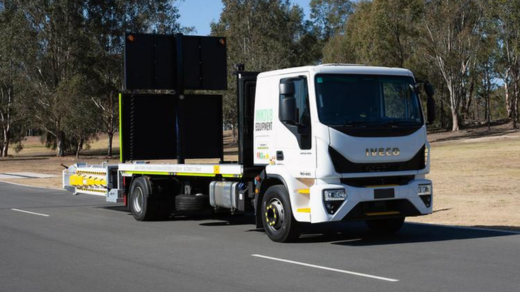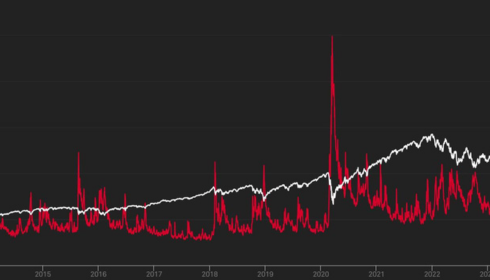
Variable Speed-Limit Signs (VSLS) are a cutting-edge technology revolutionizing road safety. Innov8’s innovative approach to implementing these signs is making roads safer for drivers and pedestrians alike. Discover how this advanced system is transforming the way we navigate roads and highways.
INNOV8 Equipment offers cutting-edge solutions for modern roadways. Their Variable Speed-Limit Signs dynamically adjust speed limits, improving traffic flow and safety. By incorporating the latest technology, these signs respond to real-time conditions, reducing congestion and accidents. Discover how INNOV8 Equipment is leading the way in smart road safety solutions today.
Introduction to Variable Speed-Limit Signs
Variable speed-limit signs are a modern innovation in traffic management that allows authorities to dynamically adjust speed limits on highways based on real-time traffic and weather conditions. These signs are equipped with sensors and communication systems that enable them to provide drivers with up-to-date information on the safest and most efficient speed limits for the current conditions. By adjusting speed limits in response to factors such as congestion, accidents, adverse weather, or road work, variable speed-limit signs aim to improve traffic flow, reduce congestion, enhance safety, and ultimately make driving a more efficient and pleasant experience for motorists.
One of the key advantages of variable speed-limit signs is their ability to enhance safety by encouraging drivers to adjust their speed based on the prevailing conditions. By providing real-time information on changing road conditions, these signs help to mitigate the risk of accidents and reduce the likelihood of traffic congestion. Additionally, variable speed-limit signs have the potential to improve traffic flow and reduce travel times by preventing abrupt slowdowns and maintaining a smoother, more consistent pace of traffic. Overall, the introduction of variable speed-limit signs represents a significant step towards creating a more intelligent and responsive transportation system that prioritizes safety, efficiency, and the overall well-being of road users.
Importance of Road Safety in Modern Transportation
Road safety is of paramount importance in modern transportation due to the increasing number of vehicles on the roads and the potential risks involved in travelling. Ensuring road safety not only protects the lives of drivers and passengers but also pedestrians and cyclists who share the roadways. Adhering to traffic rules, maintaining proper vehicle maintenance, and following safe driving practices can significantly reduce the number of accidents and fatalities on the roads. With the advancement of technology, road safety measures such as electronic stability control, automatic emergency braking, and lane departure warnings have been integrated into modern vehicles to enhance safety on the roads. Additionally, promoting awareness through public education campaigns and enforcing strict penalties for traffic violations play a crucial role in encouraging responsible behavior among road users.
In modern transportation, road safety is not just a matter of personal well-being but also has economic implications. Accidents and traffic congestion resulting from unsafe driving practices can lead to significant financial losses for individuals, businesses, and governments. Improved road safety measures can reduce the economic burden associated with road accidents, such as medical costs, property damage, and loss of productivity. Moreover, ensuring road safety fosters a conducive environment for sustainable transportation systems, leading to reduced carbon emissions and environmental impacts. By prioritizing road safety in modern transportation, we can create a safer, more efficient, and environmentally-friendly transportation network that benefits society as a whole.
Innov8 Equipment Variable Speed Limit Signs Vsls are a critical innovation in enhancing road safety and efficiency. By dynamically adjusting speed limits based on real-time conditions, these signs help to prevent accidents and optimize traffic flow. They contribute to economic savings by reducing congestion and lowering accident-related costs.
Benefits of Implementing Variable Speed-Limit Signs
Implementing variable speed-limit signs can bring about several benefits for improving road safety and traffic flow. One major advantage is the ability to dynamically adjust speed limits based on real-time traffic conditions, weather, and road hazards. This flexibility allows authorities to better manage traffic flow and prevent congestion by slowing down or speeding up vehicles as needed. By setting appropriate speed limits, the likelihood of accidents caused by speeding or sudden stops can be reduced, leading to a safer driving environment for all road users. Moreover, variable speed-limit signs can help to mitigate the impact of adverse weather conditions, such as heavy rain or fog, by lowering speed limits to account for reduced visibility and road traction.
Another benefit of implementing variable speed-limit signs is their effectiveness in improving overall traffic efficiency and reducing travel times. By optimizing speed limits according to traffic volume and congestion levels, these signs can help vehicles maintain a consistent speed, promoting smoother traffic flow and reducing the likelihood of bottlenecks. This can lead to a more predictable and efficient driving experience for motorists, resulting in reduced travel times and fuel consumption. Additionally, variable speed-limit signs can enhance driver compliance with speed limits by providing real-time feedback and adjusting limits based on the prevailing conditions, ultimately contributing to a more harmonious and safer driving environment on the roads.
Technology Behind Variable Speed-Limit Signs
Variable speed-limit signs utilize advanced technology to improve traffic flow and safety on roadways. These signs are equipped with sensors that monitor real-time traffic conditions, such as congestion, weather, and accidents. The data collected from these sensors is processed by a control system that dynamically adjusts the speed limit displayed on the signs. This allows for the speed limit to be tailored to the current driving conditions, promoting smoother traffic flow and reducing the likelihood of accidents. The technology behind variable speed-limit signs also enables authorities to remotely control and update speed limits based on changing circumstances, providing a flexible and adaptive solution to manage traffic on busy roads.
Furthermore, variable speed-limit signs are often integrated with intelligent transportation systems (ITS) to enhance their functionality. These signs can be connected to traffic management centers, allowing traffic operators to monitor and respond to traffic conditions in real-time. By leveraging communication networks and data analytics, variable speed-limit signs can be part of a larger traffic management system that optimizes traffic flow, reduces congestion, and improves overall road safety. This integration of technology not only improves the effectiveness of variable speed-limit signs but also creates a more intelligent and connected transportation network for better traffic management.
Case Studies: Successful Implementation of VSLS
Case studies on successful implementation of Virtual Small Learning Sets (VSLS) showcase the effectiveness and impact of this innovative educational approach. One notable case study involves a high school that integrated VSLS into their curriculum to enhance student engagement and collaboration. By breaking down traditional classroom barriers, students were able to connect with peers from different backgrounds and collaborate on projects in a virtual setting. This implementation not only improved academic performance but also nurtured essential skills such as teamwork, communication, and problem-solving. The success of this case study highlights the potential of VSLS to transform traditional education models and create dynamic learning environments that cater to diverse student needs.
Another compelling case study revolves around a corporate training program that utilized VSLS to deliver interactive and personalized learning experiences to employees across different locations. Through virtual platforms, employees were able to participate in real-time simulations, virtual workshops, and collaborative projects, irrespective of geographic constraints. This approach not only increased employee engagement and retention but also facilitated continuous professional development. The case study illustrates how VSLS can revolutionize corporate training by providing accessible and cost-effective solutions that align with modern workforce demands. Overall, these case studies underscore the versatility and effectiveness of VSLS in diverse educational and professional settings.
Public Perception and Acceptance of Variable Speed-Limit Signs
Public perception and acceptance of variable speed-limit signs play a crucial role in shaping the effectiveness of these traffic management tools. Initially, there may be some skepticism and resistance from the public due to unfamiliarity with this technology or concerns about government control over driving speeds. However, as drivers become more educated about the purpose and benefits of variable speed-limit signs, acceptance tends to increase. Public perception can be influenced by factors such as the reliability of the technology, consistency in implementation, and transparent communication about the reasons behind speed adjustments. Positive experiences, such as smoother traffic flow, reduced congestion, and improved safety, can also contribute to greater acceptance of variable speed-limit signs among the public.
Moreover, public perception is closely linked to the effectiveness of variable speed-limit signs in addressing traffic challenges. When drivers perceive that these signs are responsive to changing traffic conditions and help prevent accidents or improve overall traffic flow, they are more likely to support their use. Building trust in the system through accurate speed recommendations and timely adjustments can enhance public acceptance. Additionally, clear signage, user-friendly interfaces, and public awareness campaigns can help educate drivers about the benefits of variable speed limits and alleviate concerns about their implementation. Ultimately, a positive public perception of variable speed-limit signs can lead to increased compliance and cooperation from drivers, contributing to safer and more efficient roadways.
Effectiveness of VSLS in Reducing Accidents and Congestion
Vehicle-to-everything (V2X) communication using Very Short Range Communication (VSLS) technology has shown promising results in reducing accidents and congestion on roadways. By allowing vehicles to communicate with each other and with infrastructure such as traffic lights and road signs, VSLS enables real-time exchange of information about traffic conditions, road hazards, and potential collisions. This proactive approach to sharing data helps drivers make informed decisions, such as adjusting their speed or changing lanes to avoid accidents. Studies have shown that vehicles equipped with VSLS technology can detect potential dangers earlier and react faster than human drivers, leading to a significant reduction in rear-end collisions and other types of accidents.
Furthermore, the use of VSLS can also help alleviate traffic congestion by optimizing traffic flow and reducing unnecessary stops and delays. By coordinating vehicles’ movements and advising drivers on the most efficient routes and speeds, VSLS can smooth out traffic patterns and prevent bottlenecks. This not only improves overall traffic flow but also reduces emissions and fuel consumption, making transportation more efficient and sustainable. As VSLS technology continues to advance and become more widespread, its effectiveness in reducing accidents and congestion is expected to further improve, making roads safer and more efficient for all users.
Challenges in Implementing Variable Speed-Limit Signs
Implementing variable speed-limit signs on roadways presents several challenges that must be carefully addressed to ensure their effectiveness. One primary challenge is the need for thorough planning and coordination among various stakeholders, including transportation agencies, law enforcement, and local governments. Determining appropriate speed limits based on real-time traffic conditions, weather, and other factors requires input from experts in traffic engineering and data analysis. Additionally, ensuring that the signage system is compatible with existing infrastructure and can communicate effectively with drivers is crucial for successful implementation. Coordinating the installation and maintenance of variable speed-limit signs across different jurisdictions can also present logistical challenges that need to be carefully managed.
Another challenge in implementing variable speed-limit signs is gaining public acceptance and compliance. Drivers may be resistant to changing speed limits dynamically, especially if they are used to fixed speed signs or perceive the changes as arbitrary. Educating the public about the benefits of variable speed limits, such as improved traffic flow, reduced congestion, and enhanced safety, is essential to garner support and encourage compliance. Additionally, ensuring that the signage is clear, visible, and easily understood by drivers is critical to avoid confusion and prevent unintended consequences. Law enforcement agencies may also need to be involved in enforcing variable speed limits and addressing any concerns or objections from the community to ensure the successful implementation of this innovative traffic management tool.
Future Developments and Trends in Road Safety Technology
Future developments and trends in road safety technology are rapidly advancing to enhance the safety of drivers, passengers, and pedestrians. One emerging technology is vehicle-to-vehicle communication, which allows vehicles to communicate with each other to prevent collisions and improve traffic flow. This technology enables cars to exchange information about their speed, position, and direction, allowing them to anticipate potential accidents and take preventive measures. Another exciting development is the use of artificial intelligence (AI) in road safety technology. AI-powered systems can analyze data from various sources, such as traffic cameras, sensors, and weather conditions, to predict potential hazards on the road and alert drivers in real-time. These systems can also assist in decision-making processes, such as lane-keeping assistance and adaptive cruise control, to improve overall road safety.
Furthermore, the integration of advanced driver-assistance systems (ADAS) is expected to become more widespread in vehicles in the near future. ADAS technologies include features such as automatic emergency braking, lane departure warning, and adaptive headlights, which help drivers avoid accidents and reduce the severity of collisions. As these technologies become more advanced and affordable, they are likely to become standard in all new vehicles, further improving road safety for all road users. Additionally, the development of autonomous vehicles is a significant trend in road safety technology. These self-driving cars have the potential to significantly reduce human errors, which are the leading cause of accidents on the road. As autonomous technology continues to evolve, it has the potential to revolutionize the way we travel and dramatically reduce traffic accidents and fatalities.
Conclusion: The Role of VSLS in Enhancing Road Safety
In conclusion, the role of Vehicle Safety and Lane-Keeping Systems (VSLS) in enhancing road safety cannot be overstated. These advanced technologies have significantly contributed to reducing accidents and fatalities on the roads by providing drivers with crucial assistance and support. The inclusion of features such as automatic emergency braking, lane departure warnings, and adaptive cruise control in modern vehicles has revolutionized the way we approach road safety. By alerting drivers to potential dangers, helping maintain a safe distance from other vehicles, and even taking control in emergency situations, VSLS have proven to be essential in preventing accidents and saving lives.
Furthermore, the continuous development and integration of VSLS into vehicles are paving the way for a future where road accidents are significantly reduced, if not eliminated altogether. As technology advances and becomes more sophisticated, these systems will only become more effective in ensuring the safety of drivers, passengers, and pedestrians alike. The ongoing research and innovation in this field promise to bring about a new era of road safety, where accidents are rare occurrences rather than everyday risks. It is clear that VSLS play a vital role in making our roads safer and will continue to be a key component in road safety efforts moving forward.








